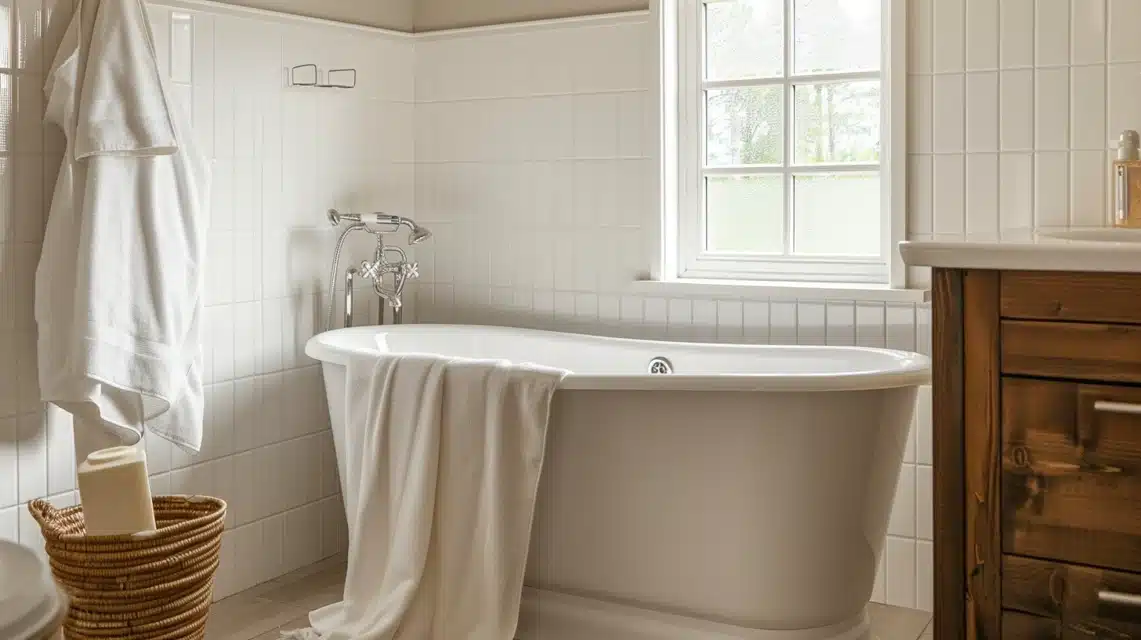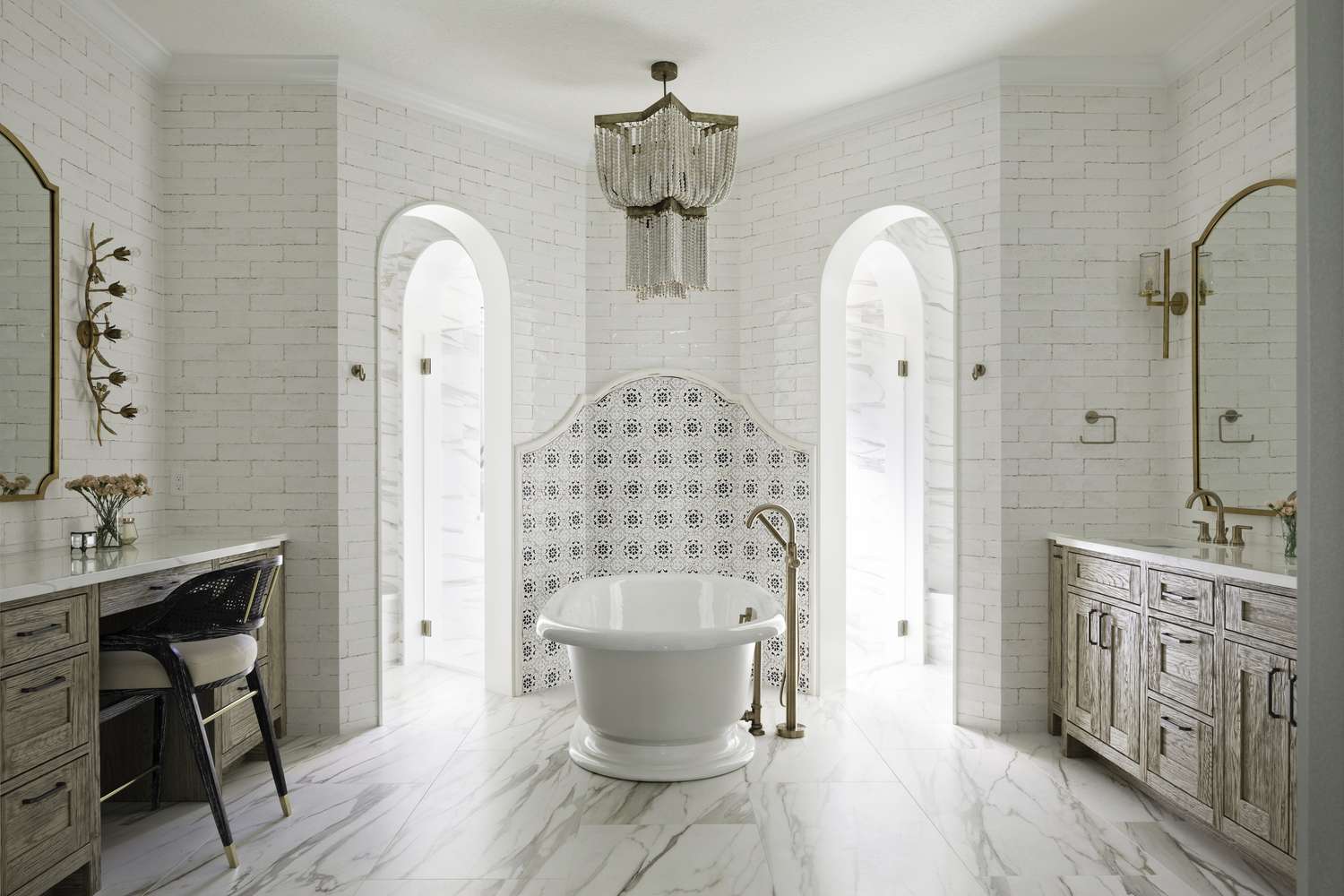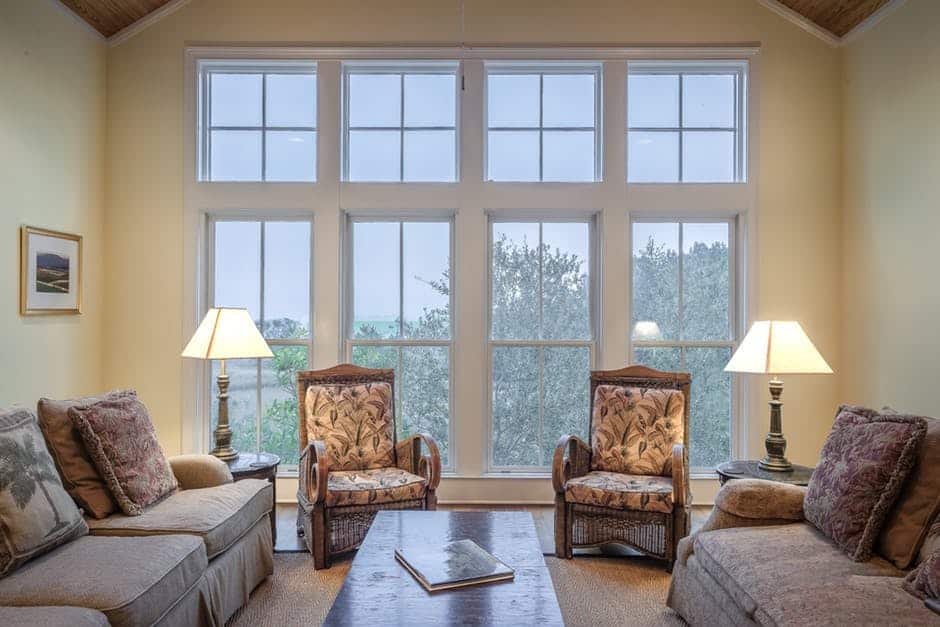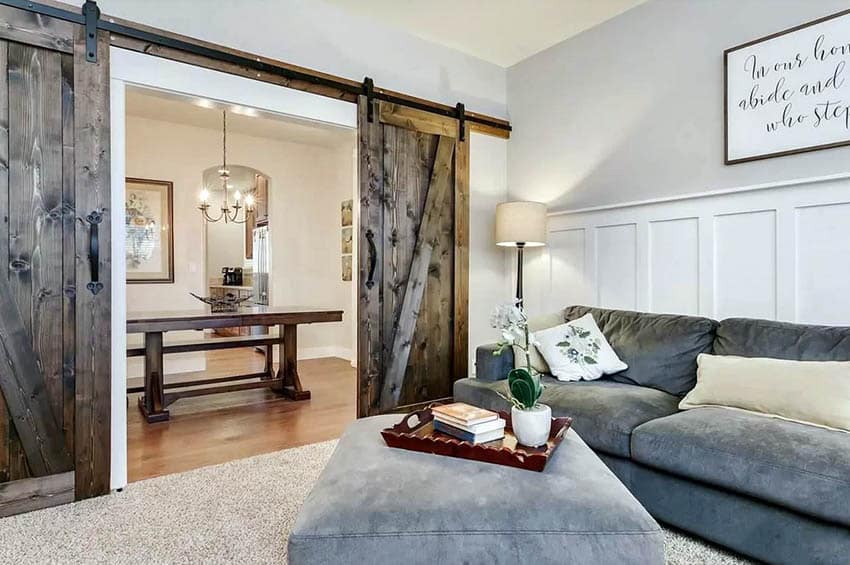Can You Use Peel and Stick Tile in a Shower?
Peel-and-stick tiles have gained popularity among homeowners and renters. They provide a quick and affordable way to refresh bathroom spaces.
While not a permanent fixture like ceramic tiles, peel-and-stick options can last several years when properly installed and maintained.
They come in various materials, including vinyl, PVC, and even thin layers of real stone.
This guide will explore the pros and cons of using peel-and-stick tiles in showers, as well as installation techniques and essential maintenance tips to help you decide on your bathroom renovation project.
Is Peel and Stick Tile Suitable for Showers?
Yes, you can use peel-and-stick tile in a shower. But it’s not as simple as just sticking them on. You need to do some extra work to ensure their durability.
Keeping Water Out
Water is the big enemy of peel-and-stick tiles in showers. To keep it out, you need to add extra protection. One way is to use grout or caulk.
Put caulk in the corners and where the tiles meet. This helps seal the area and stops water from getting behind the tiles.
How Long Do They Last?
When properly installed and cared for, peel-and-stick tiles can last a while in a shower. One person used them for 16 months with no problems.
But remember, these aren’t the same as regular tiles. They might not last as long but are much easier to install.
Things That Could Go Wrong
There are some risks with using these tiles in a shower. They might come off if you don’t put them on a clean, dry surface.
Also, if water is not sealed out properly, it can get behind the tiles and cause issues.
Pros and Cons of Using Peel and Stick Tile in a Shower
Pros of Peel and Stick Tile
- Easy to Put: You can do it yourself without hiring someone. It’s as simple as peeling off the back and sticking it on.
- Saves Money: These tiles cost less than regular tiles. This could be a good choice if you’re trying to fix up your bathroom without spending too much.
- Lots of Choices: You can find many different looks and styles. There’s likely a peel-and-stick tile, whether you want something plain or fancy.
- Looks Like Real Tile: Even though it’s not real, it can look very much like it. One user said it feels like real tile, too, but weighs much less.
Cons of Peel and Stick Tile
- Needs Careful Setup: You must be very careful when installing these tiles. If you don’t do it right, water could get behind them and cause problems.
- Might Not Last as Long: Regular tiles can last for many years. Peel-and-stick tiles might not last as long, especially in a wet place like a shower.
- More Upkeep: Because it’s in a shower with lots of water, you might need to check on the tiles more often and fix or replace them sooner than regular tiles.
How to Install Peel and Stick Tile in a Shower
Tools and Materials Needed
- Peel-and-stick tiles (enough to cover your space)
- Measuring tape
- Pencil
- Scissors or utility knife
- Level
- Clean cloth
- Cleaning solution (like rubbing alcohol)
- Caulk and caulk gun
- Grout (optional)
- Paper for making templates
Steps to Install Peel-and-Stick Tiles in Shower
Let’s review how to install peel-and-stick tiles in your shower. Follow these steps to get the best results.
- Get the Surface Ready: Before you start, ensure the shower walls are clean and dry. This is key. If dirt or water is left, the tiles won’t stick well.
- Use Paper to Plan Tricky Spots: Use paper to make a plan for hard areas like corners or around taps. Cut out paper shapes to fit these spots. This helps you get the right size and shape before you cut the real tiles.
- Seal the Edges: After you put the tiles up, use caulk around the edges to keep water from getting under them. One person in our source used painter’s tape to help keep the caulk neat.
- Add Grout for Extra Protection: You can put grout between the tiles, even without spacers. This makes the tiles more secure and helps keep water out even more.
Here are Some Extra Tips!
- Start in the middle of the wall and work out. This helps keep things straight.
- You can peel off and reposition tiles if needed, especially at first.
- Be patient. You might need to lift and smooth tiles a few times to get them right.
- You’ll likely need to cut tiles to fit the bottom of the shower. Don’t worry; the tiles cut easily with scissors.
Remember, taking your time and being careful will give you the best results. With some patience, you can change how your shower looks yourself!
Waterproofing Tips for Peel and Stick Tiles
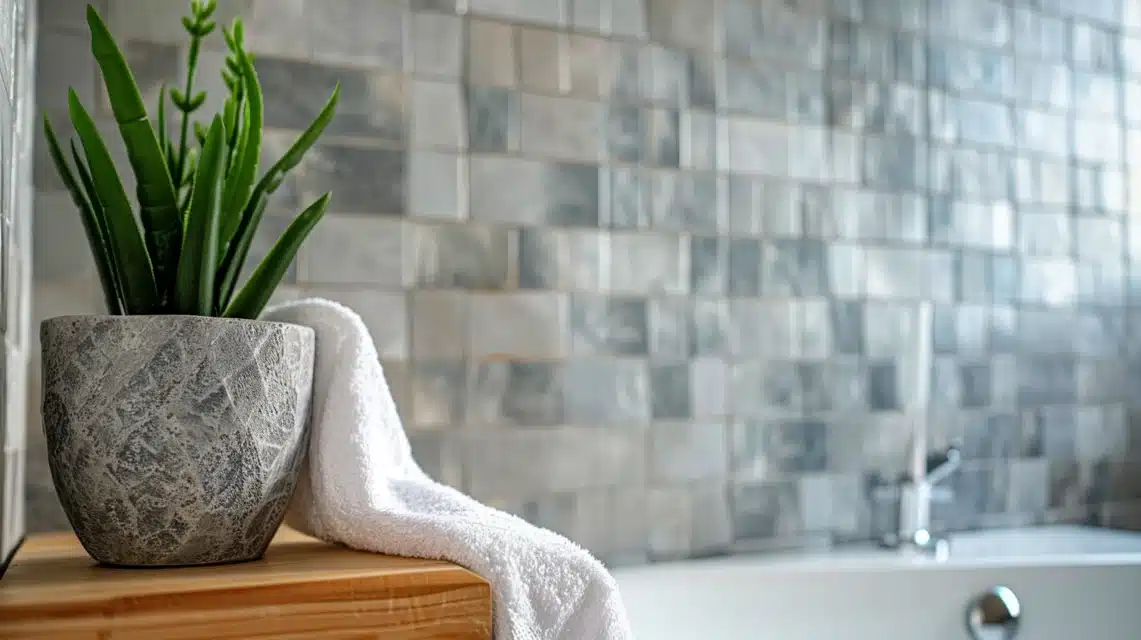
Let’s discuss how to keep water from getting behind your peel-and-stick tiles in the shower. This is important to make your tiles last longer.
Using Caulk or Grout
- Choose your sealer: You can choose between caulk and grout. Caulk is good for edges and corners, while grout works well between tiles.
- Clean the area: Make sure the spots you’re sealing are clean and dry.
- Apply the sealer: Cut the tube tip at an angle for caulk. Squeeze it into the gaps, moving smoothly. For grout, mix it as directed. Spread it over the tiles with a rubber float, pushing it into the gaps.
- Smooth it out: Use your finger (wear gloves!) or a tool to smooth the caulk. For grout, wipe off extra with a damp sponge.
- Let it dry: Give it time to dry fully before showering.
Regular Checks
- Look closely at your tiles often, maybe once a month.
- Check for any spots where the tiles are coming up or feel loose.
- Feel for any damp areas on the wall around your shower. This could mean water is getting through.
- If you see any problems, fix them right away. You might need to add more caulk or replace a tile.
- Clean your tiles regularly, but don’t use harsh scrubbers that could damage the surface.
When to Avoid Using Peel and Stick Tiles in a Shower
While peel-and-stick tiles can work well in some showers, there are times when they might not be the best choice. Let’s look at when you should think twice about using them.
High-Traffic Showers
Peel-and-stick tiles might not be tough enough if your shower is used often. Here’s why.
- More use means more water and steam hitting the tiles.
- The constant wet-dry cycle can weaken the adhesive over time.
- The tiles might wear out faster in busy homes or places like gyms.
It’s better to use regular tiles for showers that are used frequently. They can handle more wear and tear.
Poor Ventilation
Bathrooms that don’t air out well can be bad for peel-and-stick tiles. Here’s the problem.
- Without good airflow, moisture stays around longer.
- This extra moisture can seep behind the tiles.
- Over time, this can make the tiles loose or mold underneath.
If your bathroom stays damp for hours after a shower, think twice about peel-and-stick tiles. You might need to fix the ventilation first or choose a different type of tile.
Regular tiles or other waterproof wall coverings are often better in these cases. While they might cost more initially, they could save you money and hassle in the long run.
Summing Up
Peel-and-stick tiles can be viable for shower renovations, balancing cost-effectiveness and visual appeal.
While they may not match the longevity of traditional tiles, their ease of installation and wide range of designs make them attractive to many homeowners.
It’s worth noting that some manufacturers now offer enhanced water-resistant options specifically designed for wet areas.
Some peel-and-stick tiles can be painted over, allowing for future color changes without full replacement.
Success lies in proper preparation, installation, and maintenance, as with any home improvement project.

